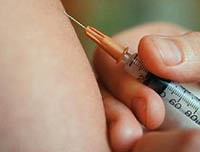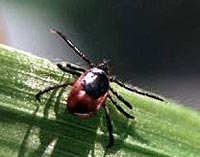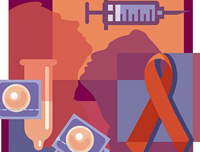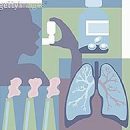Tetinnake is much easier to warn something to treat. Today in the arsenal of doctors there is a large number of different vaccines that reduce the risk of disease. Grafting from tetanus today is mandatory. All the necessary information about it read in the article.
Content
Today, vaccination from the tetanus is obligatory for all. In order to prevent the development of the disease, it is necessary that the body is ready to meet with a toxin tetanus stick. To do this, it is necessary that safe tetanus antecexin. It is most often introduced in the complex vaccine, thus, several diseases are immediately warned.
Currently, the prevention of tetanus in Russia and other CIS countries uses:
- ACDS (International Abbreviation - DTP) - Combined Vaccines against diphtheria, tetanus and cough.
- ADS (DT) - Vaccines against diphtheria and tetanus used in the presence of certain contraindications to DC vaccines, including moved cough.
- ADS-M (DT or TD) - vaccines for the prevention of diphtheria and tetanus in children over 6 years and adults, with a reduced content of the diphtheria component.
- AC (T) - Monovaccine for the prevention of tetanus.
Further, mostly, it will be about DC vaccines that are «bones» Vaccination against tetanus, as well as diphtheria and cough. All components of ADC vaccines are able to form immunity practically in 100% vaccinated. Vaccines against diphtheria and tetanus, upon completion of the primary course vaccination, form immunity for about 10 years, which explains the need for revaccination (re-conducting vaccinations) after this period of time.
 All vaccine vaccinations against tetanus and diphtheria, cough, olomyelitis are introduced intramuscularly, because at subcutaneous administration is formed persistent, resolved for many months sometimes concerned the child's seals. In addition, the subcutaneous administration of ADC vaccine can increase the risk and duration of adverse reactions, since the vaccine is resolved slower.
All vaccine vaccinations against tetanus and diphtheria, cough, olomyelitis are introduced intramuscularly, because at subcutaneous administration is formed persistent, resolved for many months sometimes concerned the child's seals. In addition, the subcutaneous administration of ADC vaccine can increase the risk and duration of adverse reactions, since the vaccine is resolved slower.
In children under 3 years old, the recommended place of administration of any vaccine is the front-side surface of the hip, in its middle third. In children over 3 years old and adult vaccines, it is recommended to introduce shoulder in the deltoid muscle (the muscular protrusion on the shoulder, in the upper third, the injection is made on the side).
Introduction of any vaccine to the buttock area is extremely recommended, especially in young children due to the high risk of damage to the sedlication nerve (and, as a possible consequence, disability), as well as large vessels. In adults in the field of the buttocks, the subcutaneous layer is expressed, in view of which such «intramuscular» Vaccination is essentially subcutaneous, that is, incorrect.
The standard ADH vaccine application scheme consists of 4 vaccinations: three with intervals of 1-2 months, starting from age 2 or 3 months., The fourth is introduced after 12 months. from the third vaccination. The first three vaccinations are the primary course, the fourth - the first (and the last, in the case of a cough) revaccination. The minimum intervals between the first three vaccinations are 1 month., between the third and fourth it is 6 months. Thus, full, with minimal intervals, the scheme looks like: 0-1 (2) -2 (4) -12 (6) months. Options are possible when the interval of 1.5 months is used between the first three vaccines. (6 weeks).
If for any reason the vaccination was missed, then the course never starts back due to the absence of a clear need and high probability of severe adverse reactions.
Contraindications for vaccination
There are general contraindications for vaccination (both in children and adults), which include acute infectious disease, allergies to vaccine components and severe immunity decrease. In addition, ADC vaccines are temporarily or absolutely contraindicated in the event that a child has a progressive disease of the nervous system, or convulsions are not on the background of increasing temperature. In this case, children are vaccinated without a coup component (ADS). If the previous vaccination caused allergies, it cannot be repeated!
Temporary and relative contraindications are diathesis (vaccinations can be carried out outside exacerbations), recently transferred ORZ (vaccinations can be carried out immediately after recovery). Arrivated against the background of increasing the temperature of the convulsions, noted at ACV or other diseases (excluding vaccinations of ADCs) are not contraindicated, but in this case it is necessary to carefully prepare a child for vaccination in order to prevent temperature reactions.
Adverse reactions to vaccination and its complications
 Vaccine ADCs quite often causes adverse reactions, however, in general, the presence of not heavy adverse reactions is a favorable sign, indirectly indicating the proper formation of the immune system of the child and the effectiveness of the imminent formative. In general, the reaction can be local, t.E., developing at the injection site (they include redness, swelling and soreness) and general: anxiety, an increase in body temperature, vomiting, diarrhea, decreased appetite. The most frequent side reaction is to increase body temperature, which is easily removed using antipyretic drugs.
Vaccine ADCs quite often causes adverse reactions, however, in general, the presence of not heavy adverse reactions is a favorable sign, indirectly indicating the proper formation of the immune system of the child and the effectiveness of the imminent formative. In general, the reaction can be local, t.E., developing at the injection site (they include redness, swelling and soreness) and general: anxiety, an increase in body temperature, vomiting, diarrhea, decreased appetite. The most frequent side reaction is to increase body temperature, which is easily removed using antipyretic drugs.
In addition to normal, severe adverse reactions can be observed to:
- Long unusual cry, when a few hours after vaccination, the child begins to cry loudly, and the crying rather resembles a screech. The cause of this reaction is pain in the place of injection and, presumably, headache.
- Increased body temperature (measured in the axillary region) Over 39 degrees.
- Significant swelling at the injection site of the vaccine, covering an area greater than 8 cm in diameter.
You can avoid such reactions (and necessary) through the preventive purpose of the antipyretic agents (as part of preparation for vaccination), which have, among other things, painkillers and anti-inflammatory effects.
The main complications of vaccination include allergic reactions that can manifest themselves in different ways: from ravis on the skin to swelling of quinque and convulsions. These complications require immediate hospitalization, and are also contraindicated to carry out further vaccinations.









